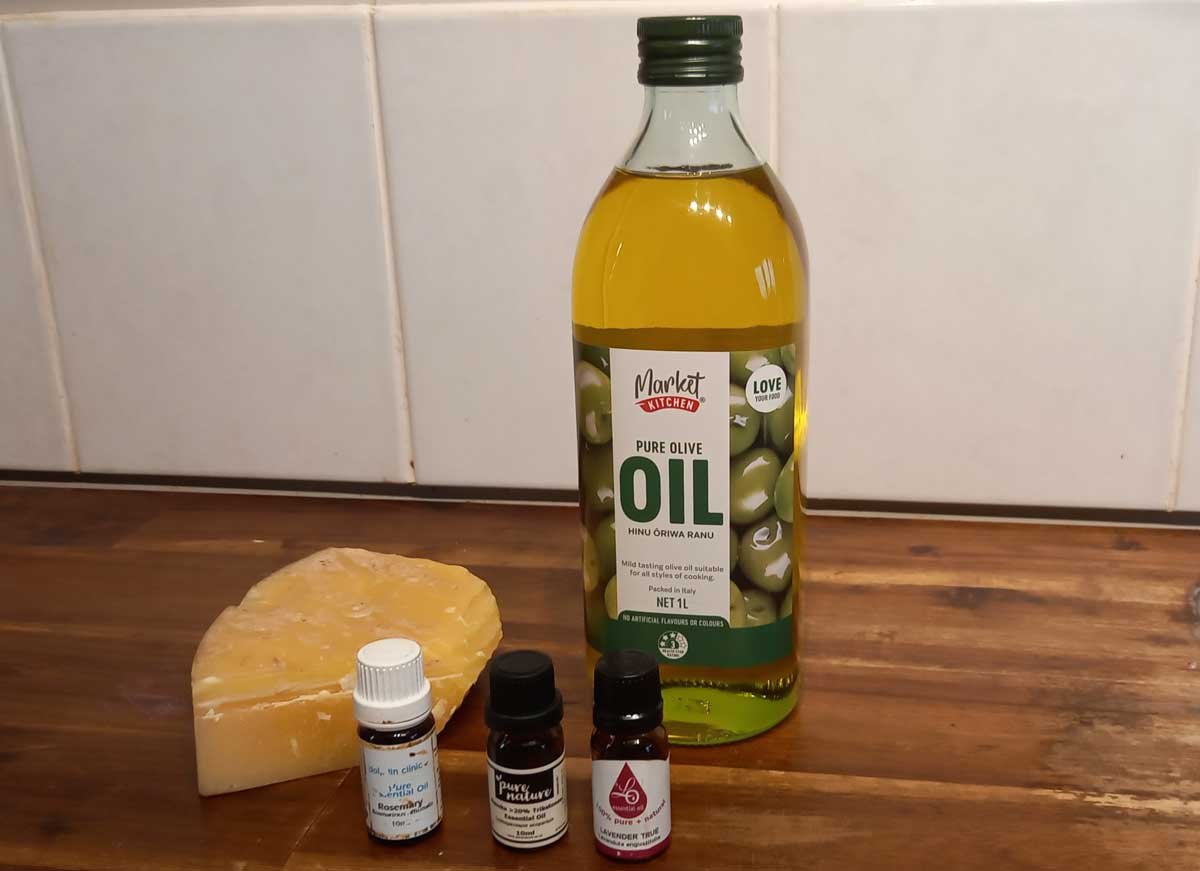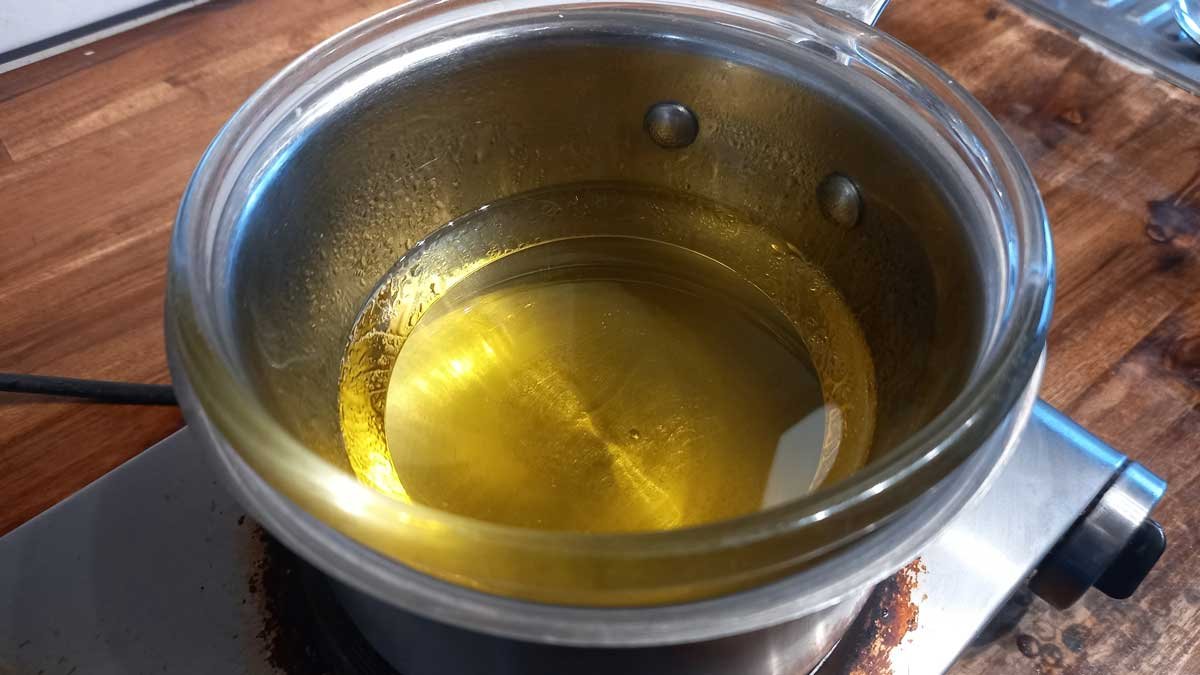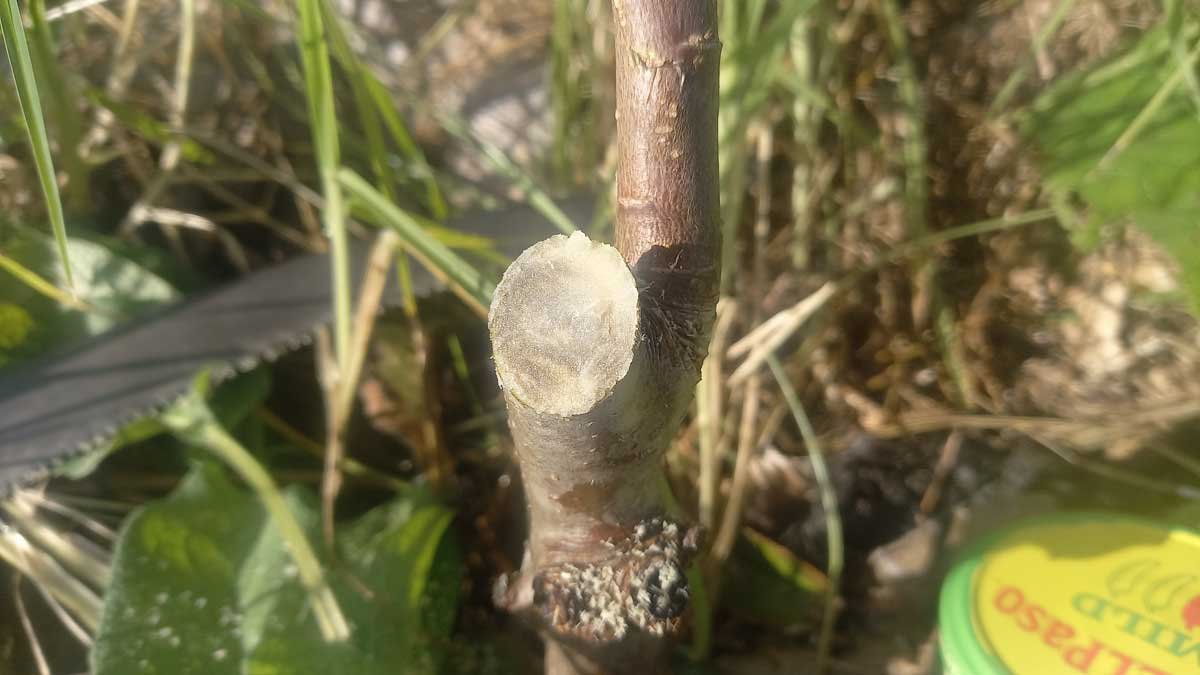Winter’s the time for pruning your fruit trees. Most trees are dormant right now – not actively growing. This means that as you make cuts in your trees, you’re leaving them vulnerable to fungal and bacterial infection.
As we know in our own bodies, an open wound is a good way for infection to set in. This is especially true in a dormant tree which may be slower to heal.
Many pruning practices are designed to prevent infection. It’s why the number one rule of pruning is to work on dry days. Using sharp, clean tools goes a long way as well.
But we can also seal the wounds to prevent infection. Kind of like an antiseptic plaster for your tree. This is most important for citrus trees in warmer parts of the country where open wounds can be an entry point for citrus borer.
You can buy pruning paste, but you can also make it at home. It’s a little fiddly and messy, but I happened to have all the ingredients and it was easier than a trip to the store for me.
I’ve designed this recipe specifically to reuse an old salsa jar. Their low profile and wide mouth make them a great shape for accessing your paste as you prune.
Depending on how many trees you have, it should do you a few seasons when stored in a cool, dark place.
Ingredients
180ml olive oil
45g beeswax (beeswax candles will work, you’ll just need to work around the wick)
Essential oils – mānuka, lavender, tea tree, and/or rosemary

Equipment
Small pot, and a small metal or glass bowl that fits on top of it; or a double boiler
Grater
Spoon
An empty, clean salsa jar with a lid
A canning funnel is helpful if you have it
Sanitiser – alcohol (60-70%), or methylated spirits. I’ve been picking up 70% alcohol sanitiser sprays very cheap at my local hardware store all year. They’re also perfect for sanitising your pruning tools and worth picking up if you see them.
Paper towels
A full jug of recently boiled water

Method
Sanitise all your equipment, including your jar and lid. Spray, or use a paper towel to wipe on your spirit then allow it to sit for a couple of minutes. Wipe dry with a clean paper towel.
Add 3-4cm of recently boiled water to your pot, and place it on an element set to a medium heat.
Fit your bowl over the hot water.
Pour the oil into the bowl and allow it to warm up.

Grate the beeswax. If you are using a candle you may find it easier to cut it into chunks so you can fish longer lengths of wick out later. The larger chunks will just take a little longer to melt.
Place the beeswax into the oil. Stir gently with your spoon until the beeswax is melted.
If necessary, fish out any pieces of candle wick and set aside on a plate or paper towel.

Add 15-20 drops of essential oil and stir gently but thoroughly for a couple of minutes. Any of the listed above in any combination – or by themselves – is fine. They are all known to have antiseptic properties.

Pour into your jar (use your funnel if you have one) and allow to set at room temperature. Set the lid on gently to prevent anything getting in while it sets – about 2 hours.
A note for cleanup: it pays to clean up quickly with this one. Use the hot water in your pot, and your jug of boiling water to melt the beeswax off your grater, and pruning paste off your equipment. Then wash as normal with very hot water.
Using your pruning paste
After you have made a fresh cut on your tree, seal the wound with a thinnish smear of paste using a clean finger. The paste is safe to touch, and won’t harm you or your skin.

The wax and olive oil will create a water-proof layer to prevent pathogens entering the wound. The antiseptic qualities of the essential oils will provide an additional layer of defense.
Store any leftover paste in a cool dark place for next season.


